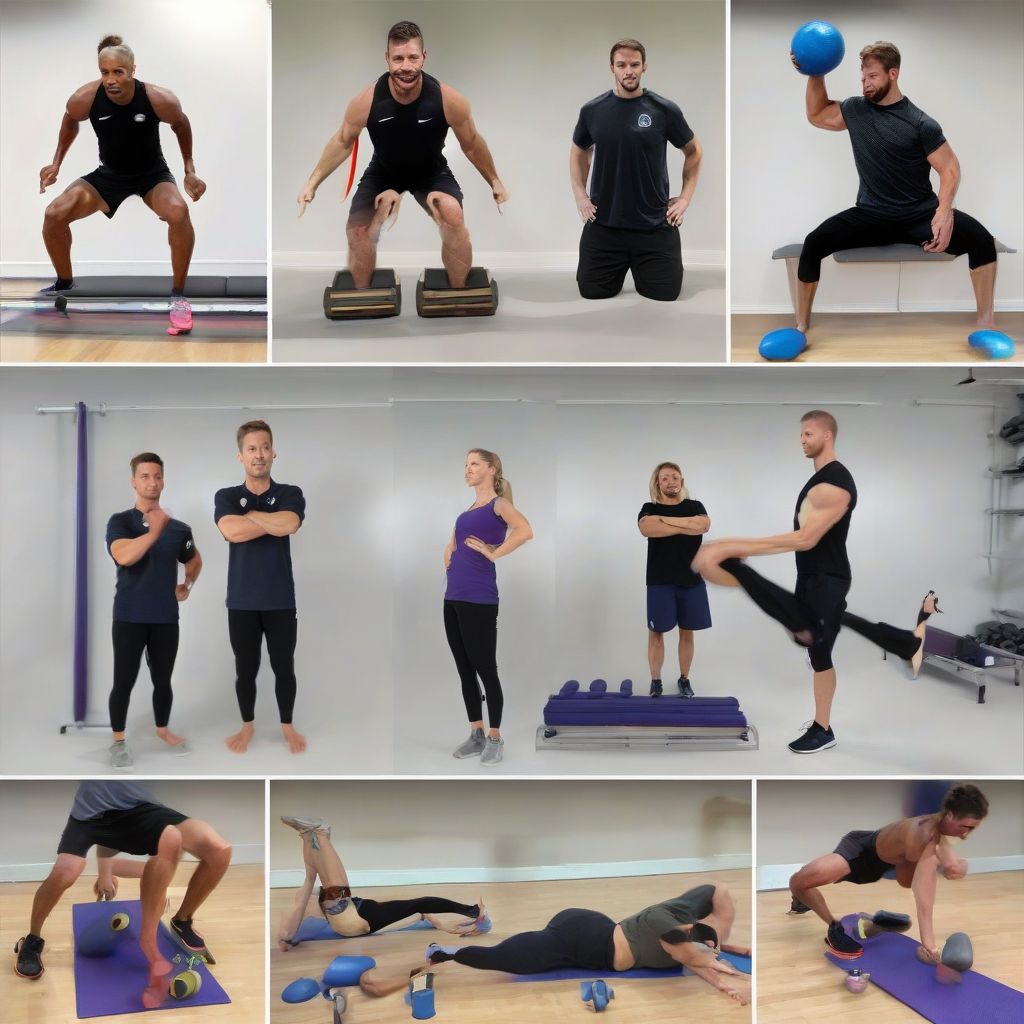“An ounce of prevention is worth a pound of cure.” This age-old adage rings especially true in the world of sports, where injuries can sideline an athlete’s progress and even jeopardize their career. Whether you’re a coach, a trainer, or an athlete yourself, understanding how to design an injury prevention program is paramount for long-term success and well-being.
Imagine an athlete at the peak of their game – training hard, hitting personal bests, and then suddenly, a pulled hamstring throws them off track. Weeks of progress lost, dreams put on hold. This is where a well-structured injury prevention program comes in, acting as a shield to protect athletes from the unexpected.
This comprehensive guide delves into the intricacies of designing an effective injury prevention program tailored for athletes of all levels. We’ll explore the key components, address common questions, and provide actionable steps to implement a program that safeguards your athletic endeavors.
Understanding the Importance of Injury Prevention
Before diving into the how-to, let’s establish why injury prevention deserves a prime spot in every athlete’s training regimen.
- Enhanced Performance: It’s simple – a healthy athlete performs better. By minimizing the risk of injuries, athletes can train consistently, leading to improved skills, strength, and overall performance.
- Longevity in Sports: A well-designed injury prevention program helps prolong an athlete’s career by addressing potential weaknesses and minimizing wear and tear on the body.
- Reduced Costs: Injuries can be expensive. From medical bills to missed competitions, the financial burden of injuries can be substantial. Prevention helps mitigate these costs.
- Improved Well-being: Beyond physical health, preventing injuries contributes to an athlete’s mental and emotional well-being, fostering confidence and a positive training environment.
Key Components of an Effective Injury Prevention Program
A successful injury prevention program is multifaceted, addressing an athlete’s physical condition, training habits, and individual risk factors. Here are the key components:
1. Comprehensive Assessment
Just like a tailored suit, an injury prevention program should begin with a comprehensive assessment of the athlete. This includes:
- Medical History: Examining previous injuries, surgeries, and pre-existing conditions helps identify potential risk factors.
- Movement Screening: Assessing an athlete’s movement patterns, flexibility, and stability helps pinpoint areas of weakness or imbalance that could increase injury susceptibility.
- Postural Analysis: Analyzing posture provides insights into muscle imbalances and potential biomechanical issues.
- Strength and Conditioning Evaluation: Determining an athlete’s baseline strength, power, and endurance is crucial for designing targeted exercises.
2. Customized Exercise Program
Based on the initial assessment, a tailored exercise program forms the core of injury prevention. This program should encompass:
- Flexibility and Mobility Exercises: Incorporate dynamic stretching, foam rolling, and mobility drills to improve range of motion and reduce muscle stiffness.
- Strength and Conditioning Training: Include exercises that target all major muscle groups, focusing on building balanced strength, power, and endurance.
- Proprioception and Balance Training: Incorporate exercises that challenge balance and coordination to improve the body’s awareness of its position in space, reducing the risk of falls and awkward movements.
- Sport-Specific Training: Include drills and exercises that mimic the demands of the athlete’s specific sport to enhance performance and reduce sport-related injuries.
3. Proper Warm-up and Cool-down
Emphasize the importance of a structured warm-up routine to prepare the body for activity and a cool-down to promote recovery and reduce muscle soreness.
4. Load Management and Recovery
Educate athletes about the importance of gradual load progression, proper rest, and recovery strategies, such as adequate sleep, nutrition, and active recovery techniques like massage or hydrotherapy. Overtraining can increase the risk of injury, so finding a balance between pushing limits and allowing the body to recover is vital.
5. Nutrition and Hydration
Highlight the crucial role of a balanced diet rich in fruits, vegetables, lean proteins, and whole grains in supporting tissue repair, reducing inflammation, and optimizing performance. Adequate hydration is equally important for maintaining electrolyte balance and preventing muscle cramps.
6. Education and Communication
Empowering athletes with knowledge about injury prevention is crucial for long-term success. Encourage open communication between athletes, coaches, and medical professionals to address concerns, track progress, and make necessary adjustments to the program.
Common Questions About Injury Prevention Programs
1. How often should an athlete engage in injury prevention exercises?
Ideally, athletes should incorporate injury prevention exercises into their routine 2-3 times per week, in addition to their regular training.
2. Can injury prevention exercises be done at home or do I need a gym?
Many effective injury prevention exercises can be performed at home with minimal equipment. Bodyweight exercises, resistance bands, and simple tools like foam rollers can be easily incorporated into home workouts.
3. How long does it take to see results from an injury prevention program?
While individual results may vary, athletes often notice improvements in flexibility, balance, and strength within a few weeks of consistent implementation.
4. What are some common mistakes to avoid in injury prevention programs?
- Neglecting proper warm-up and cool-down
- Progressing too quickly with training load
- Ignoring pain or discomfort
- Not addressing muscle imbalances
- Lack of communication between athletes and coaches
Conclusion
Designing an injury prevention program for athletes is an investment in their long-term success and well-being. By incorporating comprehensive assessments, customized exercise plans, and education on healthy training habits, athletes can significantly reduce their risk of injuries and reach their full potential. Remember, consistency and a proactive approach are key to building a resilient athlete.
If you’re ready to take your training to the next level and prioritize injury prevention, consult with a qualified sports medicine professional or certified athletic trainer. They can provide personalized guidance, create a tailored program, and help you achieve peak performance while staying injury-free.
 Injury Prevention Exercises for Athletes
Injury Prevention Exercises for Athletes
[amazon bestseller=”sports injury prevention”]
